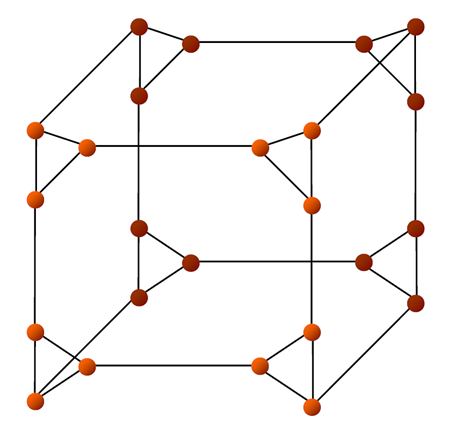Joint Architecture Standard Overview Profile
Cube Connected Cycles
Cube-connected cycles (CCC) are structures based on hypercubes (see Figure). Given a hypercube of dimension d, each hypercube node is replaced with a ring of size d. This causes the node degree of all nodes to be fixed at 3 regardless of network size! This structure excels when the port count at each node is limited. However, the low node degree yields longer average path lengths and diameters than other more highly connected topologies.

Cube-Connected Cycle (d=3)
The abundance of loops and alternate paths require a robust routing algorithm, but supports good load-balancing, a lack of bottlenecks, and an abundance of different paths between nodes. A major disadvantage is the fixed number of nodes required for this topology, which is equal to d*2^d nodes (i.e., 8, 24, 64, 160, etc., nodes)
- Advantages: Fixed node degree of 3 for all nodes. Good load-balancing and redundancy. Low overall link count due to low node degree.
- Disadvantages: Does not perform as well as more highly connected topologies. Larger average path length and diameter. Certain link failures (between each “loop”) can have a more significant impact on performance than others.